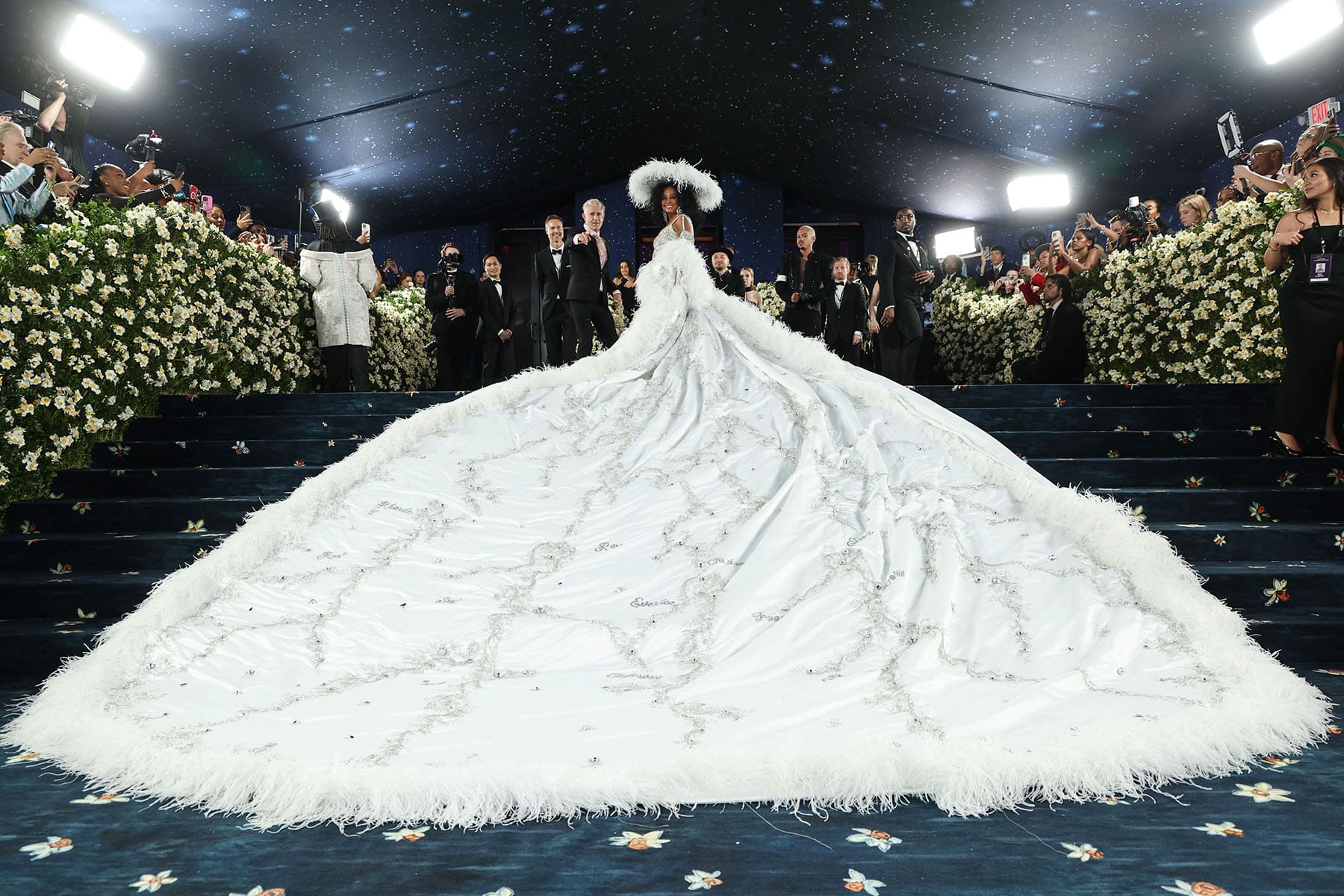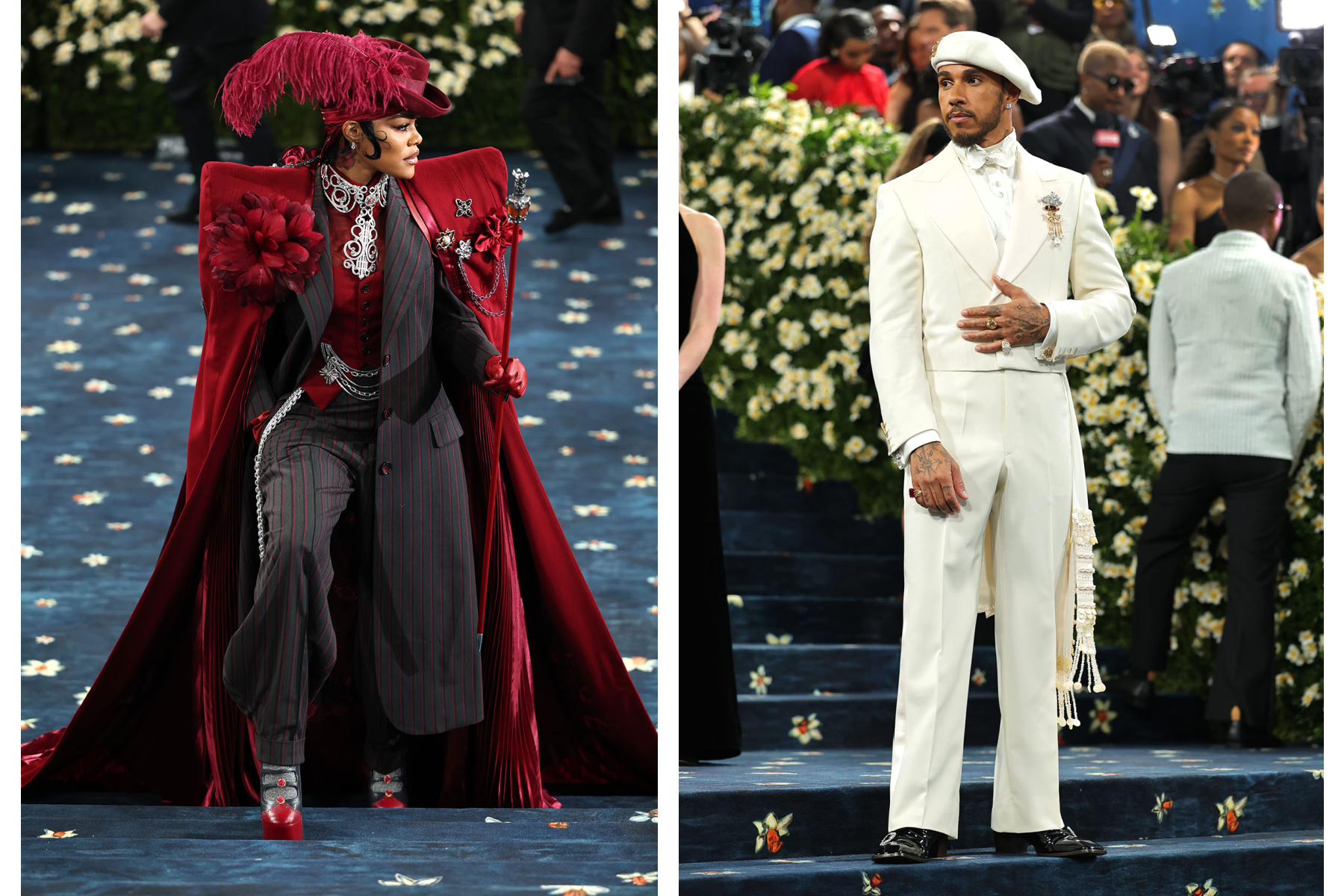
The NIH’s New Cronyism
May 6, 2025
Pope Donald I
May 6, 2025This column first appeared in The Amendment, a biweekly newsletter by Errin Haines, The 19th’s editor-at-large. Subscribe today to get early access to her analysis.
When Black Dandyism was announced as this year’s theme for the Met Gala, expectation and anticipation was high for fashion’s biggest stage to also be its Blackest and boldest ever.
The stakes were raised Monday night at an event that has always been about statements, where the sartorial has often met the political. What would it mean for the Met Gala to send a message at a time when the president of the United States has sought to erase the contributions of Black and LGBTQ+ Americans to our culture and democracy?
The blue floral carpet became something rarer still: a runway for resistance.
The politics of visibility and resilience were on display, as Whiteness was decentered and the intersectional excellence of those historically marginalized by their race, gender and sexuality was celebrated as part of the American story.
(Lexie Moreland/WWD/Getty Images)

(Kevin Mazur/MG25/Getty Images)
Black Dandyism, dating back generations, is about more than fancy clothes; it is a style that represents self-expression, self-respect, aspiration, joy, swagger and freedom. For queer people and women, it was also a means of bending gender norms, where fabric and adornments could come together as a type of armor.
Monday night was also in large part a tribute to perhaps the most prominent modern Black American Dandy, the trailblazing stylist and editor-at-large of Vogue, André Leon Talley, the magazine’s first Black man creative director. For decades, his presence and contributions inside such an influential and intractably White institution were significant. Talley died in 2022, but his legacy loomed large over the event.
Monday’s event was a parade of Black success with luminaries such as Diana Ross and her daughter, Tracee Ellis Ross; Rihanna; Serena Williams; former Vice President Kamala Harris; WNBA star Angel Reese; rapper Megan Thee Stallion; and actresses Zoe Saldaña, Lupita Nyong’o, Cynthia Erivo and Zendaya.
Four Black men were co-chairs of the gala: Colman Domingo, Lewis Hamilton, Pharrell and A$AP Rocky. And alongside the traditional, White-owned fashion houses were several Black designers whose work was in the spotlight, including Sergio Hudson, Charles Harbison, Christopher John Rogers, Grace Wales Bonner and the late Virgil Abloh.
Since taking office in January, President Donald Trump has issued multiple executive orders targeting diversity, equity and inclusion, as well as gender. While the orders are not laws, they have had a chilling effect on efforts to proactively promote and preserve social and professional gains for women, people of color and LGBTQ+ Americans in government and society. Trump also took control of the Kennedy Center, long regarded as the nation’s cultural institution and a space for diverse artistic representation.

(Kevin Mazur/MG25, Dia Dipasupil; Getty Images)
This climate and context are why it mattered that the Met Gala, a traditionally elite space, was the forum for a statement about the history and present moment for Black and LGBTQ+ Americans — and a reminder of the threats to their future contributions. In a political moment when Black history is under attack in classrooms, and LGBTQ+ lives are targeted by lawmakers, the gala’s theme carried the weight of defiance.
Given the backlash against them, one could argue that some of their fashion statements could have and should have been bolder, pushing more boundaries, leaning more heavily into the theme, more directly paying homage to specific designers or other periods embodying the era. There were also White gala attendees whose choices did not meet the moment, feeling more safe or traditional than bold or on message, and others who nailed the assignment as allies in couture.
But overall, the night was a historic reminder that showing up — whether in velvet, pearls, sequins, feathers, lace, or wearing a gaze of defiance — is itself a form of resistance, and an opportunity to affirm, honor and liberate in the way that sometimes only fashion can.
Great Job Errin Haines & the Team @ The 19th Source link for sharing this story.








